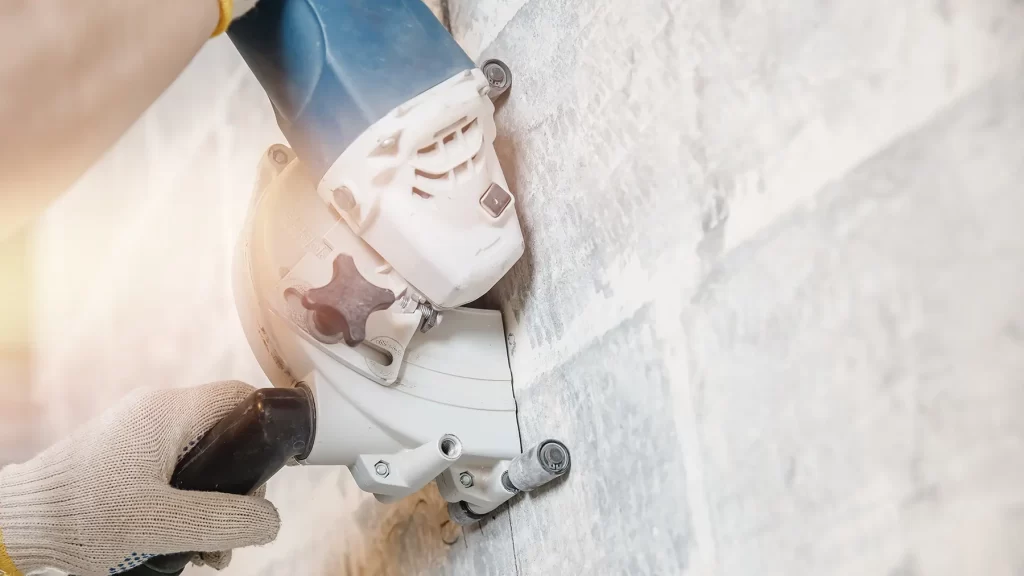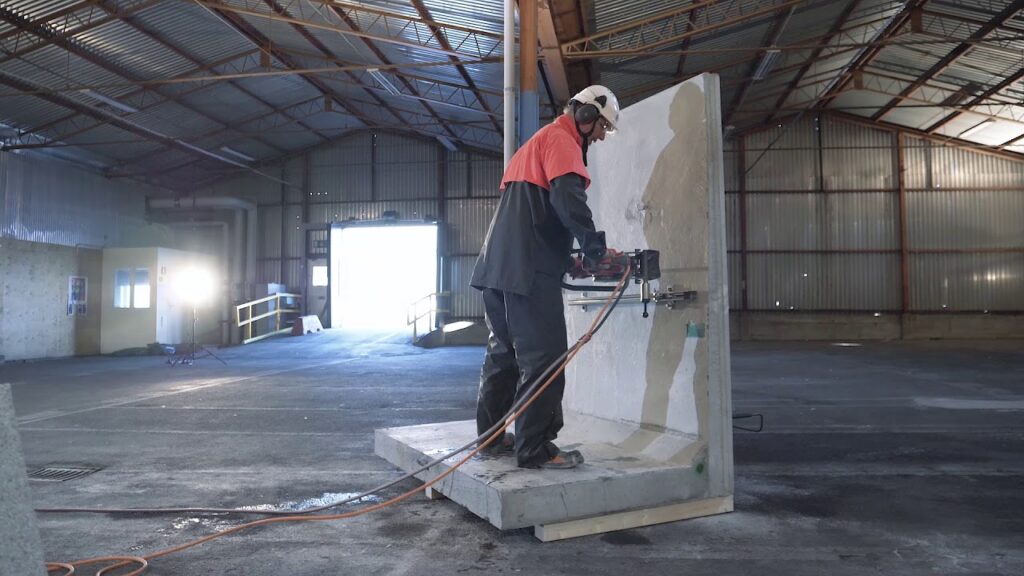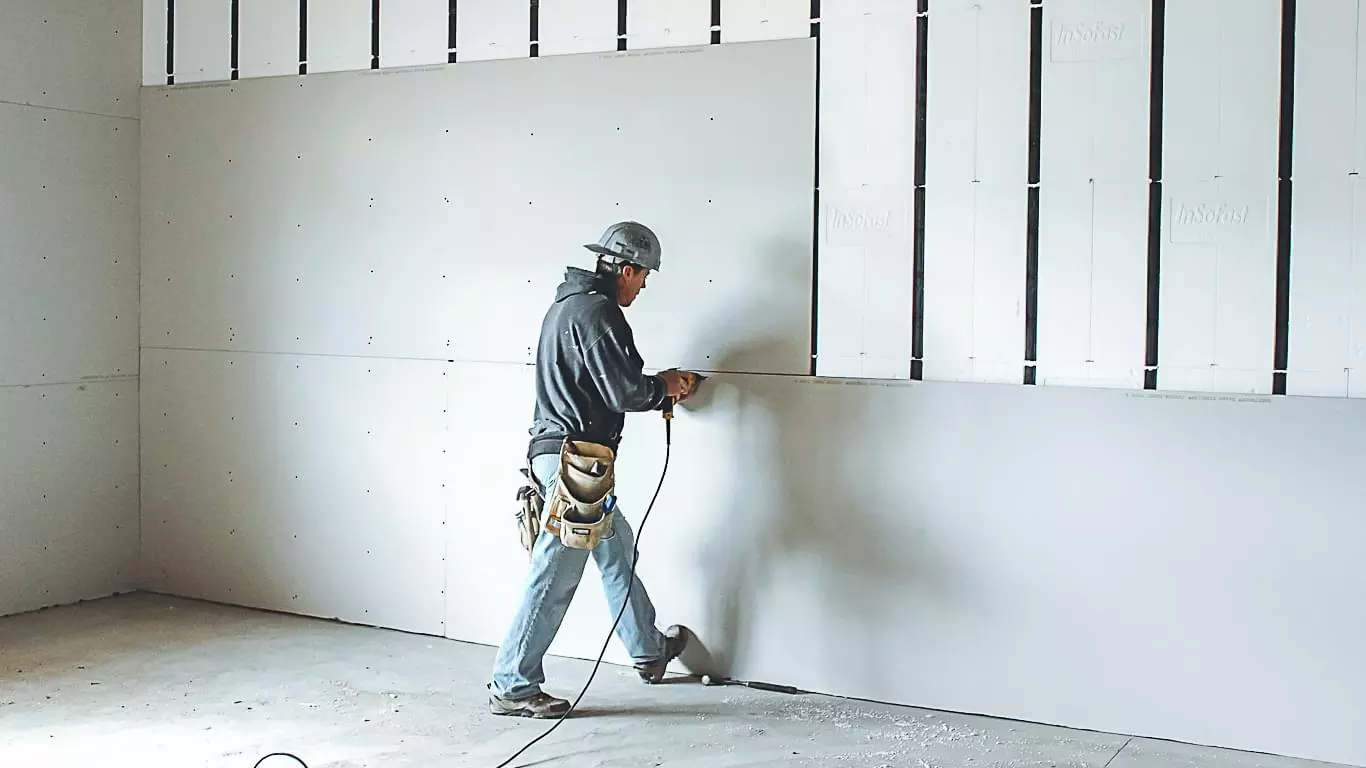How to Cut a Wall Safely It is also so easy to assume that it would be an easy thing to do to cut a wall, but it truly is a task that demands attention, patience, and planning to accomplish. If you are opening up new door space, installing a new wire, or just cutting out the moldy pieces of drywall, cutting a wall will become a permanent support and safety measure. Too many owners and even weekend warriors neglect it and have no time for the potential dangers. Behind every wall are electrical cables, water pipes, or gas pipes. And bearing walls, i.e., bearing walls that support some element of the building load, are present as well. It is expensive damage or even potentially life-taking danger to cut one without proper doing. The key is to plan ahead, peek behind the wall, and cut through it with the proper techniques.
1. Prepare the Work Area
The first thing in any project of How to Cut a Wall Safely should be the complete clearing of the work area. Furniture, appliances, electronics, and other fragile or valuable objects should be cleared out not only to avoid possible damage by accident but also in order to provide an unobstructed, hazard-free space. As Chametla et al. (2025) posit in the treatment of dust control within astrophysical environments, the build-up of dust has widespread effects—impacting system dynamics as well as the integrity of equipment that is sensitive to such impurities. With the same impact, during interior wall cutting, dusting can make appliances and fixtures outdated, apart from causing long-term health issues if not handled with care.

By clearing the mess, workers do away with the risk of tripping accidents, provide unobstructed movement for free flow, and facilitate easy placement of protective coverings. In addition, a clear space allows for improved observation and accessibility, both of which are essential for safe operations. The procedure of relocating sensitive items prior to cutting as a starting point is not just about ease; it is a safety measure that forms the basis of all other actions. Vent and doorways seal off with plastic sheeting and tape so that the dust won’t travel. Select a clean work space so that children or pets will not inadvertently gain entry into your workspace. Lastly, place all materials that you will be using in convenient locations. Coming down to pick up tools halfway through a job doubles the chances of something going wrong. A better but fractionally better space utilization is the key to a successful, effective, and safe process of wall removal How to Cut a Wall Safely.
Since error here can be fatal, in doubt, refer to a builder or structural engineer. They will check whether reinforcement, for example, a header beam, is required prior to cutting. Cutting between non-bearing walls is generally easy enough, but load-bearing walls need to be calculated by a professional. Understanding the difference saves you both life and expense in repair.
2. Utilities Checking
Behind each wall are pipes, wires, or perhaps gas lines. Cutting them by mistake is not just inconvenient—it’s dangerous. Treading on an electric wire can lead to electrocution or fire, and treading on a water pipe can flood your building. Cutting a gas line can kill you How to Cut a Wall Safely.
Prior to cutting, apply a stud finder with live-wire detection or a wall scanner that detects metal and electrical lines. Indicate any questionable areas clearly. If there are outlets, switches, or plumbing fixtures in the wall, presume there are utility lines vertically or horizontally from them.

Always turn off power at the breaker prior to cutting around outlets.When suspected plumbing issues, turn off the water supply first.If there are gas lines, the best thing to do is to halt and call a professional. A minute search for utilities can prevent you from having to pay expensive damage and get hurt.
3. Choosing the Right Tools
The equipment that you possess will factor in safety and the type of your cut. For drywall, a utility knife or a drywall saw will suffice most of the times. They will cut cleanly without causing extra damage. For big jobs or stubborn material, a reciprocating saw will be necessary but always handle it How to Cut a Wall Safely.
If studs or wood framing have to be cut through, a depth-adjustable circular saw is the way to go, but it’s a trick with safety equipment. Never use ridiculously powerful equipment if a less sophisticated one will do; the concept is control, not speed.
Personal protective equipment you’ll be wearing consists of safety glasses, gloves, dust masks or respirators, and ear protection. Having a shop vacuum or dust collection attachment is extremely useful to have the work area free of dust when cutting. The proper tool for the job is minimizing risk and making the process cleaner and safer How to Cut a Wall Safely.

4. Step-by-Step Cutting Process
After preparation, utilize a slow cutting technique while cutting safely. Indicate the area that you want to cut with a pencil beforehand and level it. Check dimensions twice before cutting for the first time.
Start with marking the surface with a utility knife. It keeps edges from going ragged and keeps you in line. Make a pilot hole and then a jab saw or its equivalent. Go slowly through your guidelines, allowing the tool to do the work. With wall, apply pressure and never apply more pressure than necessary to the blade.
If studs,saw them one at a time and support them by holding them up so that they do not suddenly drop. Clear the debris safely and inspect behind the wall while opening it up. Take your time—accidents primarily happen when people are in a hurry. A deliberate, methodical process is the key to clean and safe results.
5. Dealing with Dust and Debris
With How to Cut a Wall Safely, dust is inevitable but must be controlled to aid in health and sanitation. Drywall dust is very fine and will freely spread throughout the entire house if not controlled. Begin by taping the area off with plastic sheeting on doors and vents. The floor must be covered with drop cloths to pick up debris.
Wear a good dust mask or respirator to prevent breathing in fine particles that are irritating to lung tissue and cause problems in the long term. Safety glasses also prevent fine slivers and dust from entering your eyes. Dust using a vacuum or dust-collecting attachment when sawing to trap particles suspended in the air.
Following sawing, vacuum large pieces and put them into heavy-duty bags. Wipe clean surfaces with dampened rags to eliminate residual dust. Cleaning not only renders your space livable, but it also forestalls future indoor air quality problems How to Cut a Wall Safely.

6. When to Call a Professional
DIY is cheap and esteem-building, but don’t. If the wall you’re allowed to cut has heavy on it, is heavy with cryptic wiring, or has pipes or gas lines inside it, have somebody else do it. All work that deducts from or adds to the structure needs to be performed by an engineer, with the appropriate permits and bracing.
Using a professional engineer or contractor to subcontract out the work will surely utilize local building codes and not make expensive errors. Same applies for electricians and plumbers, who have been trained to work with systems that are unsafe to mess around with.
Use professional assistance as an investment, not a cost. You can try to excavate little chips of drywall, but sound structural repair is a gamble. Letting a pro do it saves you time, gets you into the safe zone, and returns dividends in the long term How to Cut a Wall Safely.
Conclusion
How to Cut a Wall Safely is more a matter of preparation, being able to look ahead and see through things in your way, and a feeling of safety rather than a matter of the proper tools. Area clearance and load-bearing wall detection, utility inspections, and dust control, to name but a few, come into play. Small pieces of drywall aren’t a problem for old pro do-it-yourselfers, but dimension or structure adjustment is best left to professionals. To break and call the professionals in is as much a question as being able to chop.
By remaining on the safe, conservative path, you can get wall-cutting work done at no added risk or cost of mistake. Whether your goal—is it to breathe and open space, install new hardware, or repair damage—caution and reserve always will yield maximum quality. Drilling holes in walls is not half-cutting walls—it’s half-How to Cut a Wall Safely safely, wisely, and cautiously.

